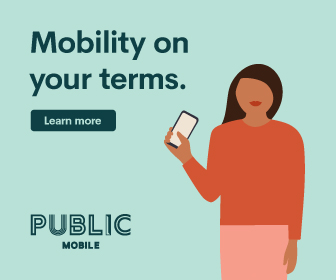Lenders must register the mortgage loan by way of two methods:
- Mortgage charge: The mortgage provider registers your home with the registry or land title office within your municipal district. The mortgage is then registered, transferred or discharged by the provider.
- Collateral charge: The mortgage provider registers the property under the PPSA or Personal Property Security Act of Canada. In this case, the mortgage provider can only register or discharge the property but not transfer it. It is advisable to understand exactly how the collateral charge works in case you need to take out another loan while the term of your mortgage is still existing.
What is a Collateral Mortgage?
Should you need more money during the term of your mortgage, you can get your lender to advance you the added cash according to the rising value of your property without the need for you to refinance the mortgage. To lend you the money you need, your lender registers your property with a collateral charge just as he would for a home equity line of credit. In this way, your lender can register the property for an amount that is higher than the mortgage loan amount that you require.
Once your home is registered with a collateral charge, you can borrow any amounts you need against your home without the need to refinance the mortgage. The costs for taking additional loans including legal fees is also lowered since you won’t need to engage a real estate lawyer to assist you through the refinancing process.
Having taken out a collateral mortgage with one lender, you cannot transfer it to another lender at any time including the end of the term of the mortgage. This is because each lender has his own terms and conditions. Since the lender does not register the collateral loan agreement with your land title or registry office, its terms and conditions may not be acceptable to the new lender. Should you need to break the collateral loan agreement, you’ll have to comply with the legal formalities with the help of a real estate lawyer.
How is a Collateral Mortgage Calculated?
In case your mortgage provider enters into a collateral mortgage agreement with you, he can register your mortgage for an amount of up to 125% of the value of the property you just bought.
For instance, you may have bought a home that carries a value of $300,000. After paying a down payment of 20% or $60,000, you’ll need to take out a mortgage loan for the balance 80% or $240,000. Some lenders may choose to register the property for $240,000 or the original mortgage amount. However, some others may choose to register for a higher value or collateral mortgage, so you need to properly calculate your mortgage rates.
In this case, if the value of the property appreciates and becomes $350,000, you can take out a loan of up to 80% of the new value after deducting the payable amount remaining on your mortgage. In this way, you won’t have to refinance your property.
Which Lenders Offer Collateral Mortgages?
The TD Bank (beginning on October 18, 2010) and Tangerine Bank (beginning on December 10, 2011) are two banks in Canada that offer you collateral mortgages aside from various other lenders. When taking out a mortgage, check with your mortgage provider about your options of getting a collateral mortgage.
Traditional vs Collateral Mortgage in Canada
When choosing mortgages in Canada, the fine print can easily confuse you. I know you may be asking the common questions about payments, rates, and so on, but you probably will not bother about the difference between traditional vs collateral mortgage.
My two cents is that banks do not even want clients to know there is a difference between Traditional vs Collateral Mortgage. The truth is that all mortgages are different, yet a good number of banks in Canada are registering clients to collateral mortgages without consultation. Having noted that, the main agenda of this post is to compare traditional and collateral mortgages. In other words, which of the two options is better?
The Basic Differences
Traditional mortgage has been around for more than three decades. This is the “common” mortgage with components such as amortization, repayment period, interest rate and terms.
Collateral mortgage is a bit different. In this case, the lender registers a charge for the value of your house. Charges can even go to 125% of the full value of the house. The argument the lenders give is that you do not have to register another mortgage when borrowing more money. Therefore, this mortgage mostly suits people who want to refinance without incurring legal costs.
Voluntary Disclosure Not Working
In 2014, the Canadian Finance Minister signed an agreement with several banks for voluntary disclosure of information regarding collateral mortgage. By Jan 31, 2015, the banks were supposed to be providing specific information to their clients.
Does this mean that we dump our conventional mortgages and join the collateral mortgage bandwagon? I do not think so.
The voluntary disclosure thing does not seem to be bearing any fruits. The last time I checked some of the bank websites, there was nothing to suggest the contrary.
The Handcuffs of Collateral Mortgage
Banks will never tell you in black and white that collateral mortgage is non-transferable, and thus disadvantageous to most borrowers. With the freedom of movement constrained, the collateral mortgage can be a trap.
Hypothetically, here is an example of Morgan who recently went to his mortgage broker in Ontario with the following details:
- His home is worth $400,000
- Outstanding mortgage worth $30,000
- Fully advanced line of credit worth $300,000
- Total owed $330,000
Morgan seemingly did not understand that his mortgage came in two parts: a fixed mortgage worth $30,000 and a line of credit portion worth $300,000.
Another fact that was in fine print is that mortgage was registered against the full value, $400,000. The interesting thing is that the bank only gave him $330,000. Now Morgan is in deep trouble because no institution is ready to give him a mortgage.
The Old-Fashioned Way
I think traditional mortgage is still the preferable choice. After the mortgage term, you can easily transfer or switch to other banks in Canada very cheaply. In case you need a second mortgage registered on top of the original one, your lender will usually approve. If you wish, you can also shop for another lender and get the mortgage. Check our mortgage payment calculator to better assess what you can afford.
In Summary
What is your lender offering you? Look at all the details and ask all the questions. Despite the accessibility carrot that collateral mortgage lenders dangle, this type of mortgage has problems in offsetting unpaid debts, transferring the mortgage, among others. I would choose traditional mortgage anytime for its flexibility in terms of transferring and borrowing. You should too, if you do not have any plans of refinancing or getting equity from your property.
















